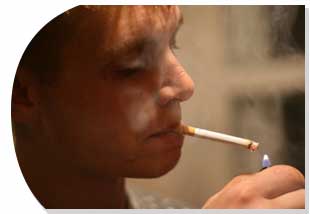According to the 2005 Florida Youth Substance Abuse Survey, 56.5% of Floridian students abuse alcohol and about 65% abuse marijuana.
Being a giant peninsula, Florida, especially Miami, is the gateway for drugs to come into the United States, therefore residing abundant. Where as drugs are abundant in the state of florida. the use of drugs to alter the state of mind dates as far back as 10,000 years archeologically, and historical evidence of cultural use over the past 5,000 years. Humans have used drugs as a means of spiritual growth (such as vision quests with peyote) and other rituals of the sort. Today, aside from spiritual conquest, drugs are used by society for three reasons: Escaping from anxiety, enhancement of bodily sensations, and the increase psychophysical performances.
|
 |
Various factors, such as your personality, your genetic makeup and peer pressure, affect your likelihood of becoming addicted to a drug. Identifying the problem is the first step in drug rehabilitation. There are both behavioral symptoms and physical symptoms that demonstrate an illness. Mood-altering drugs produce mood swings from euphoria to depression. A user may be passive and withdrawn one minute and angry or hostile the next. A normally energetic and outgoing person becomes chronically depressed and uncommunicative.
The beginning stage of treatment used to treat alcoholism or other drug addictions is called detoxification. This process involves abstinence to eliminate the drug from the body, followed by social and environmental support during the associated physiological and psychological changes. Methadone is the official drug used for detoxification of Heroin and other opiates (Charles P. O’Brien 1). But, due to the addictive nature of methadone (even if the dangers of methadone are inferior to those of Heroin), there are non opiate treatments that can settle the addictions to methadone if deemed necessary.
The next step to mental enrichment is residential treatment, or inpatient treatment. South Florida has beautiful condominiums minutes from the beach, creating desirable learning environments where the education on drugs can play an effective role in the life of the patient. After Behavior therapy, the patient is carefully observed outside of the facility until they are have finished rehab.
|
 |
| Many other Florida treatment centers like Twelve Oaks Alcohol and Drug Treatment center in Navarre, Florida involve The 12-step program started as the treatment for alcoholics who were incapable of quitting their bad habit of drinking. in 1935 by Bill Wilson and Dr. Bob Smith, known to A.A. members as "Bill W." and "Dr. Bob", in Akron, Ohio. to surrender willful self-reliance and adopt the practice of reliance on God, or another "Higher Power" of the member's own understanding is the chief principle of 12-step recovery. The 12 steps that the Big Book declares lead to sobriety are as follows: |
| 1. |
We admitted we were powerless over alcohol — that our lives had become unmanageable.
|
| 2. |
Came to believe that a Power greater than ourselves could restore us to sanity. |
| 3. |
Made a decision to turn our will and our lives over to the care of God as we understood Him. |
| 4. |
Made a searching and fearless moral inventory of ourselves. |
| 5. |
Admitted to God, to ourselves, and to another human being the exact nature of our wrongs.
|
| 6. |
Were entirely ready to have God remove all these defects of character. |
| 7. |
Humbly asked Him to remove our shortcomings. |
| 8. |
Made a list of all persons we had harmed, and became willing to make amends to them all. |
| 9. |
Made direct amends to such people wherever possible, except when to do so would injure them or others. |
| 10. |
Continued to take personal inventory and when we were wrong promptly admitted it. |
| 11. |
Sought through prayer and meditation to improve our conscious contact with God as we understood Him, praying only for knowledge of His will for us and the power to carry that out. |
| 12. |
Having had a spiritual awakening as the result of these steps, we tried to carry this message to alcoholics, and to practice these principles in all our affairs. |
|
Although the 12 step program is great for religious believers, Therapeutic Training Routines Courses are also available to all drug rehab and alcohol rehab desirers. This method focuses on teaching the student to confront difficult situations and communicate effectively. Every course is designed to create in the student the skills necessary to complete the courses following. Students are moved to the next program when they have completed their current course, and not before. This ensures that all students progress at their own pace, and will not graduate the program before they are ready.
|

